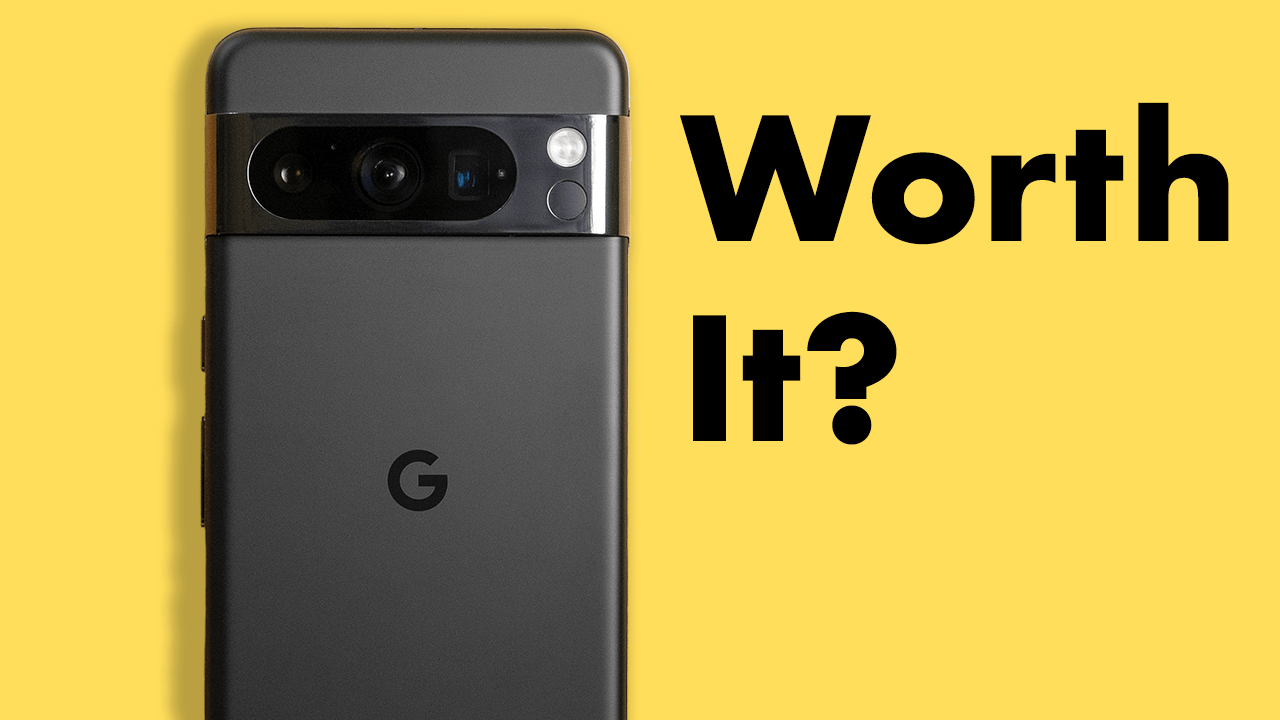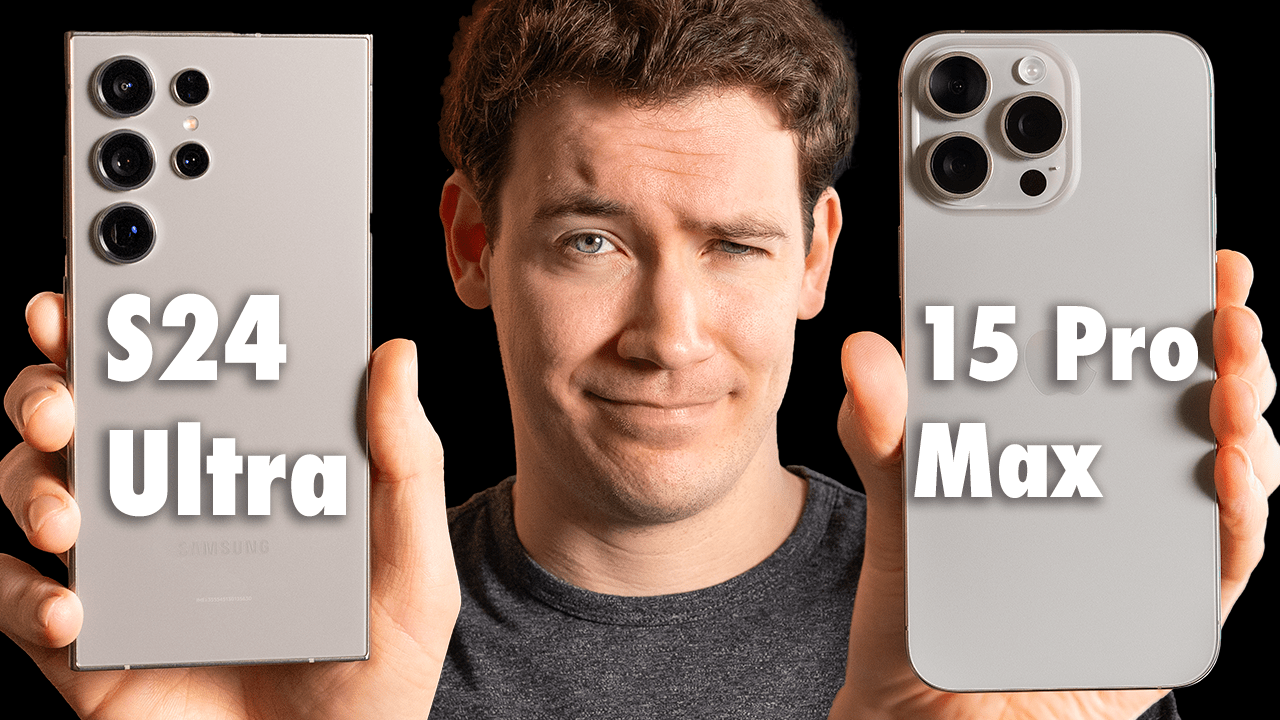After using the Sonos Move 2 for 6 Months, here are our thoughts on whether this battery-powered WiFi/Bluetooth speaker is worth it, how its sound quality compares to other Sonos speakers and who we think should pick one up
Product Links:
Video transcript:
It’s been 6 months since I bought a Sonos Move 2, the follow-up speaker to the Sonos Move Gen 1, which I previously reviewed, and it’s been one of my favorite speakers I’ve ever owned. So, what improvements does the Move 2 make to that experience? How does this compare to other speakers in Sonos’ lineup? And then, who exactly do I recommend this speaker for?
First, let’s start with the thing that really sets the Sonos Move 2 apart from most other speakers, and that’s its integrated battery and weather resistance. The Sonos Move 2 is rated for 24 hours of battery life while connected to Wi-Fi and listening at a moderate volume. So far, I have not found myself in a situation where I’ve actually needed the full 24 hours of battery life, but I have at least pushed these speakers to 12 hours of listening time, and their battery life hit right around 50%. So, what Sonos says, in my experience at least, seems to be accurate. And just anecdotally as well, when I first got the Move, I didn’t even plug it in for the first week. I just put it on my desk; it was able to last me an entire week of just listening to music for a couple of hours a day.
The battery can also be removed when you purchase a replacement kit from Sonos, which should help further the life of this speaker. Though keep in mind, this is still a speaker with radio and computer chips in it, so it’s not necessarily going to be designed to last you like 30 years. The integrated battery makes the Move 2 incredibly versatile, not just for bringing it outdoors but moving it around from room to room. It’s weather-resistant with an IP56 rating, which means its enclosure is protected from dust and water jets; it’s just not designed to be potentially submerged like the Sonos Roam is.
This weather resistance also sets it apart from some other speakers like Sonos’s Era 300 and Era 100, which are designed to be humidity-resistant, but those speakers are not rated to resist any splashes. Plus, the Move 2 is also designed to be drop-resistant as well. So, take all of those features combined, and I’d argue the Move 2 is the most versatile speaker in Sonos’ lineup to date.
But of course, you’re only going to want to move it around everywhere if this thing actually sounds good. With the Move Gen 1, it sounds a bit higher in the mids, but it doesn’t have as much detail. The Move 2 has a better balanced sound with a bit more in the highs and improved clarity, so things like drum hits sound a bit tighter. Plus, it has a wider soundstage. It also keeps that classic warm and bright sound signature that you’d expect from a Sonos speaker. I definitely prefer the sound signature of the Move 2 after listening to more and more stuff between it and the original Move, which you’d kind of expect given the acoustic upgrades the Move 2 got.
Sonos gave the Move 2 two tweeters instead of just one found in the Gen 1 Move, so just a single Move 2 can do stereo sound, and two Sonos Moves stereo paired together sound incredible, especially when I’ve listened to classical and movie soundtracks on them. I’ve noticed a much wider soundstage. As for bass, it feels very similar to the Gen 1 Sonos Move. Now, as with any speaker, the amount of bass you actually hear from it is somewhat dependent on speaker placement, and the nice thing with the Move 2 is you can easily adjust its placement for better bass, like placing them in the corner of a room. Every time you pick it up and place it somewhere else, that’ll engage automatic Trueplay, a feature that uses the mics on the Move 2 to help optimize its sound automatically. And in my experience, they do produce enough bass, especially with two of them, to annoy your downstairs neighbors. Though I wouldn’t say it’s as deep as the bass I’ve heard come from an Era 300 though or how people describe the Sonos Play 5. Heck, even my Sonos Era 100s seem to produce more noticeable bass than a stereo pair of Sonos Moves in the same spot.
Now, another thing that makes the Move 2 a compelling choice for a portable speaker are all of the connectivity options that come with it, like Apple AirPlay 2, which is what I’ve primarily used to control my music on it. It connects via Wi-Fi Direct Control with tech like Spotify Connect. It has Bluetooth 5.0, which, for the first time on a Move speaker, you can actually turn Bluetooth on while the speaker stays connected to Wi-Fi, though you can’t use Bluetooth with a stereo pair of Move 2s. The Move 2 also supports a line-in connection through Sonos’ USB-C line-in adapter. And if you want to connect the speaker to Ethernet, you can do that too with Sonos’ USB-C Ethernet adapter.
Then there are the two voice assistant options with the Move 2. Sonos has dropped support for the Google Assistant in the Move 2 but kept the Amazon Assistant, as well as Sonos’ own voice control, which can play from Apple Music, Amazon Music, and now, for the first time, Spotify, matching the services the Amazon Assistant can play from. But Sonos’ voice control can do basic things over Bluetooth, like playing and pausing music, turning the volume up and down, etc. Though one annoying thing I have found with the Sonos voice assistant, this is specifically for Apple Music listeners, is you’ll ask it to play a song, it’ll play that song, and then it won’t play anything else after it.
Another way you can control media and music on the speaker is via the Sonos app. It’s actually pretty cool that it integrates with all the major streaming music services. It also integrates with services like Audible, Pocket Casts, which I use for podcasts, and Libby, where you can check out audiobooks from your local library. The app also allows you to easily group the Move 2 in with other Sonos speakers, contains free music via Sonos Radio, and it supports high-res audio.
Alright, the last thing that’s really impressed me 6 months later is the design of the Sonos Move 2. Like with all of Sonos speakers, it’s very minimalist in its design, making it easy to blend in with a lot of different home furnishings, unlike other speakers out there, which are more aggressive or kind of techy looking. I also like the warmer white color of the new Move 2, which matches Sonos’ newer design aesthetic compared to the cooler white on the Gen 1 Move. But that’s not the only color available. The speaker also comes in black as well as olive.
Also, like with newer Sonos speakers, the Move 2 gets the new top design with the indented volume bar, making it easier to adjust the volume without having to look directly at the top of the speaker. It also gets dedicated skip forward and skip back buttons and retains the speaker grouping functionality where you can tap and hold the play/pause button to group in the Move 2 with other Sonos speakers in your system currently playing something. And if you have multiple speakers in your system playing different things, you just repeat that action to cycle through all of the different things playing in your system. It also has a physical mic mute switch, so if you don’t like the idea of the mics always being on, you can easily disconnect them. And I love they added the ability where you can actually use the USB-C port to charge your phone with the battery in this speaker.
So, those are all the things I’ve really liked about the Move 2 over the past 6 months. Now, let’s talk downsides. One big one is it doesn’t appear this speaker will be able to take advantage of the new Bluetooth Auracast technology, which seems to have been really finalized just after the launch of the Move 2. Auracast allows you to stream audio to multiple Bluetooth speakers from any audio transmitter, and in Bluetooth 5.3, there’s even support for parsing out the left and right channel of audio, so there might be a way in the future to mimic what Sonos does today with their stereo pairs just over Bluetooth. Now, another downside with the Move 2 is, of course, price. Sonos did raise it by $50 compared to the original Move. But I will say I was actually able to score this Move 2 on sale already from Sonos for like $359, which is a pretty good deal. And the last downside, of course, is there’s still no cast support on this or any of Sonos’ products. Now, maybe one day the Auracast Bluetooth tech will just fix this for Android users, but if you’re an Android user today, you have no way to directly cast your media to Sonos speakers from the OS outside of just using Bluetooth, which might work for some Android users.
Alright, now let’s talk recommendations. This is a speaker I can recommend to almost anybody because of its excellent sound, its drop and weather resistance, minimalist design, its overall versatility, and connectivity options. Now, as I said before, $449, that is a lot to spend on a single speaker and does also put you in the range of other speakers that Sonos sells. If you mainly plan to get a speaker where you think it’s going to be in the same place like 90% of the time and you don’t need the drop resistance or the IP56 water resistance rating, then for the money, I’d personally go with a Sonos Era 300, which I’ve also reviewed. It’ll give you better bass performance with the added benefit of being able to play Dolby Atmos tracks from Apple Music or Amazon Music, which sound incredible on that speaker. Plus, the Era 300 also has the same Bluetooth features, USB-C input, and voice assistance as the Move 2. Now, if you’re looking to spend around $500 but you don’t care about the Dolby Atmos stuff with the Era 300 and you don’t really need the portability of the Move 2, then I’d look at going with a stereo pair of Era 100s, which I’ve reviewed. So, those are my recommendations.
Now, if you want to learn more about the Era 300 and Era 100 I’ve mentioned that I reviewed, you can click here to get to those reviews or click on the link in the description to get to all of the videos I’ve done on Sonos products. If you like this video and found it helpful, it would really help me out if you hit that thumbs-up button below and don’t forget to subscribe to the channel to see more videos on Sonos products, headphones, and speakers. For 6 months later, I’m Josh Teder. Thanks for watching.


